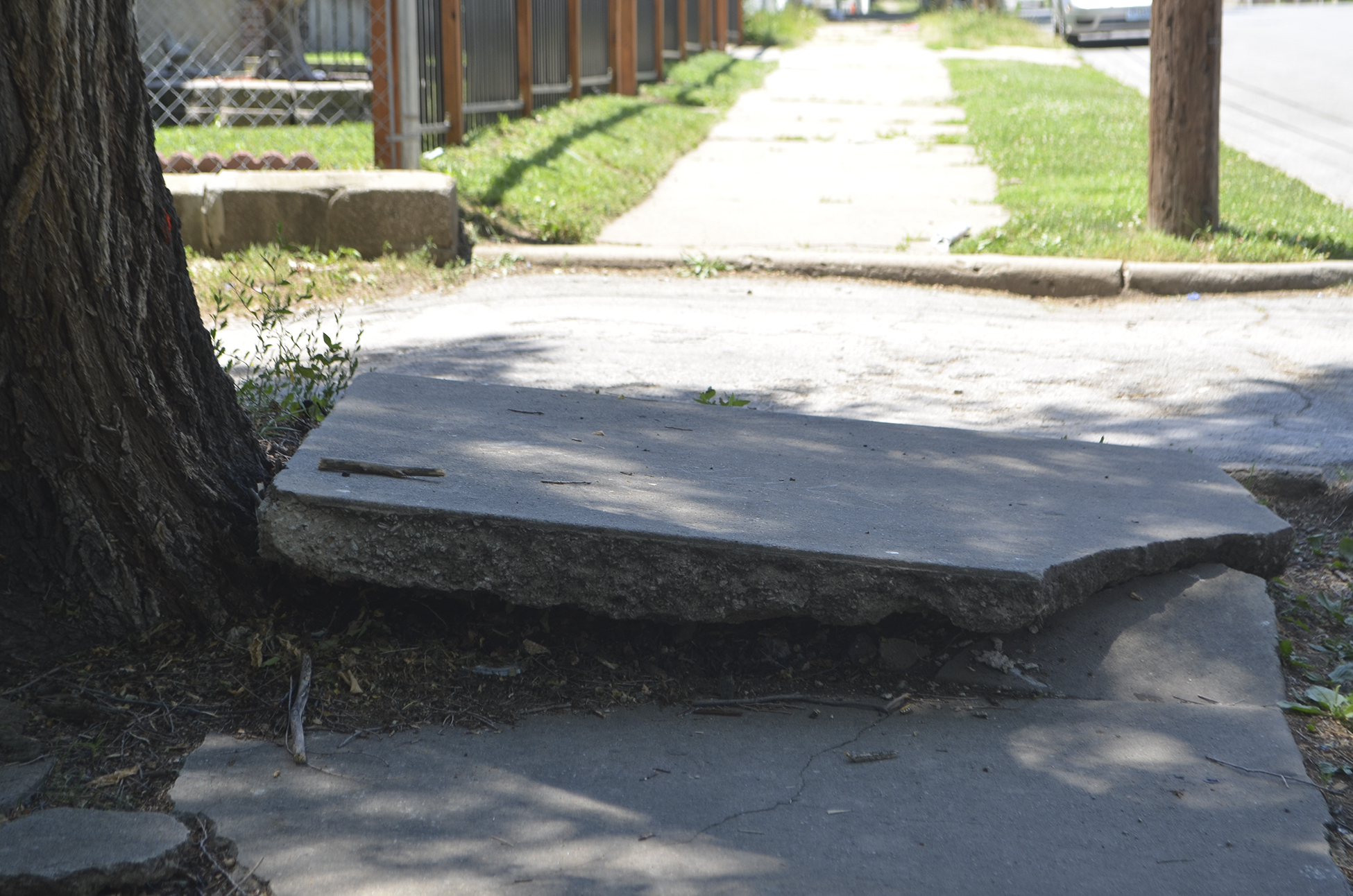Northeast News
June 19, 2017
KANSAS CITY, Missouri – When voters approved all three ballot measures in April of 2017 related to the issuance of $800 million in General Obligation Bonds, they were promised $150 million towards long overdue sidewalk repairs throughout the city. On Thursday, June 15, the City Council began the tall task of figuring out exactly how those sidewalk repair funds can be equitably distributed.
According to Jeff Martin of the Public Works Department, the City of Kansas City, Missouri began the process immediately after the election, declaring that the $1.7 million in existing sidewalk repair assessments would be written off as part of the program. The City also decided that 50% of the $150 million in GO bond proceeds should be dedicated to the construction of sidewalks where they don’t currently exist.
During the June 15 City Council business session, Martin described where the sidewalk repair program will go from there. One vital aspect of that program will be the systematic inspection of every sidewalk in the city; a process Martin suggested could be repeated into perpetuity in 10-year cycles.
“With the passage of the GO Bond we now have a funding source of approximately $150 million over the next 20 years to fund a systematic sidewalk program throughout the city,” Martin said.
The top priority will be to address the $7.3 million in backlog repairs that are already in the system. Those repairs are expected to be completed throughout the summer of 2017 and into 2018.
As for the method to inspect every sidewalk in the city, Martin suggested that teams of two could be capable of inspecting roughly 80 miles of sidewalk in a given year. With 4-5 group of two, plus supervisory positions, Martin said that the inspections could be completed in 10-year cycles. City Manager Troy Schulte estimated that the inspection process would cost between $700,000 and $800,000 annually.
Martin proposed using a point-based system based on proximity to a variety of key destinations to determine priority neighborhoods for initial sidewalk repair.
“We’ve looked at proximity to parks, schools, libraries, grocery stores, population densities to bus routes, transit stops; and based on the distance of street sections from those destinations we assigned a point value,” Martin explained.
According to that plan, the areas with the highest walking traffic would provide the most demand on the point-value map. Some Council members, however, wondered if the methodology being proposed for the sidewalk repair program skewed in favor of portions of the city that were already highly developed, at the expense of economically disadvantaged sections. Fifth District Councilwoman Alissia Canady expressed her belief that heavily residential areas east of 71 Highway would be left out in the proposed plan because they are not near schools or shopping districts. That said, those constituents were promised new sidewalks just like any other citizen of Kansas City, Missouri, Canady argued.
“My constituents supported the GO Bond based on the fact that they were going to get sidewalks for their community,” Canady said. “I only see two major areas of impact for my district currently, and I would have not made those necessarily the areas of priority based on the feedback I’ve got from constituents.”
“I just don’t really see how anybody can look at this map and say that it’s equitable,” Canady added.
Third District Councilman Quinton Lucas expressed similar concerns, suggesting that the hot spots identified by the Public Works Department skewed heavily towards portions of the City that have already seen considerable attention from the City.
“I think how we got to this kind of heat measure effect is because you have this kind of nexus in arguably more developed parts of the City,” Lucas said.
Other key prioritization questions emerged, as well. Fourth District Councilwoman Katheryn Shields, for example, asked Martin whether the City would repair sidewalks in front of businesses, in addition to the focus on residential sidewalks. The answer at the moment is yes, though the question kicked off a discussion over whether or not businesses should be obligated to pay for their own sidewalk repairs.
“What about commercial that has 8-10 feet of concrete?” City Manager Troy Schulte asked. “Are we responsible for all of that or just a designated pedestrian part?”
Though right now it appears the City would be obligated to repair commercial sidewalk repairs, the Council agreed to discuss that issue – as well as the rest of the proposed sidewalk repair program – during a future committee meeting. The Council will be off this week, but is expected to return during the week of June 26 with a full slate of meetings.






















